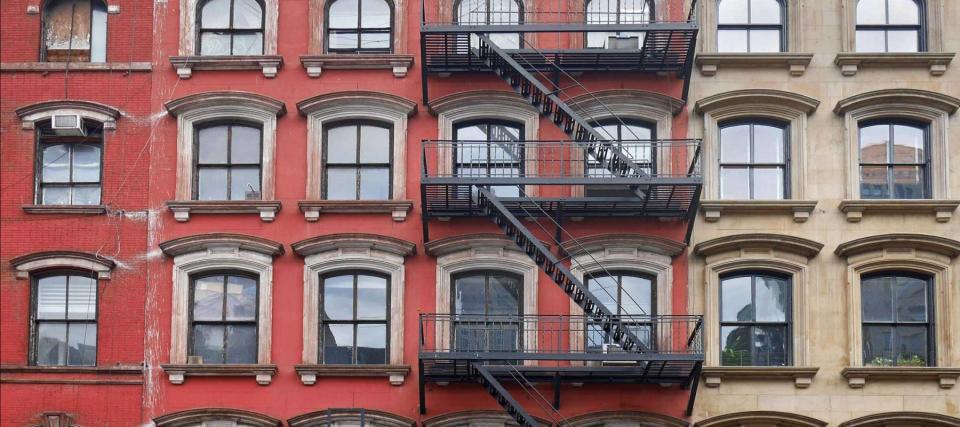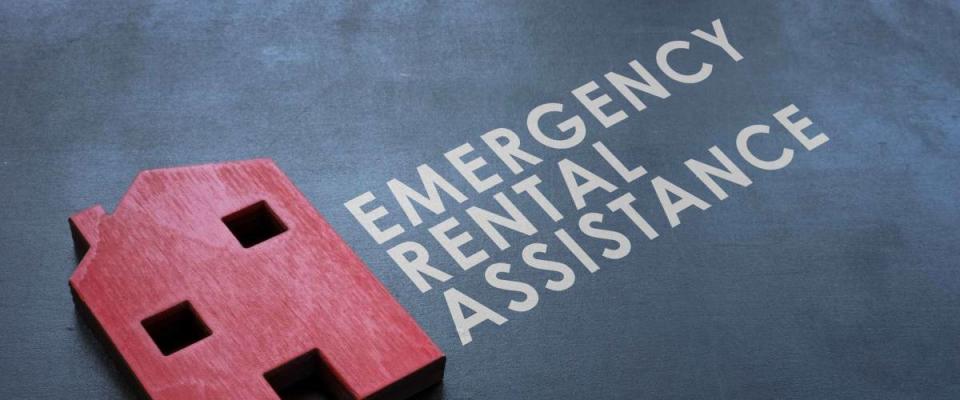Stimulus checks for struggling renters can provide $25,000 in federal relief

When COVID-19 first slammed into the U.S. economy, most observers feared out-of-work homeowners would default on their mortgages by the thousands while millions of unemployed renters would be out on the streets.
More than a year later, the country’s housing market is volcanic, thanks largely to ultra-low mortgage rates. But while homeowners have seen the value of their houses surge, people who rent have not been so fortunate.
Because so many of them work in industries clobbered by the pandemic, like hospitality and retail, many renters haven’t been able to earn a steady income in over a year. Millions are behind on their rent.
If that describes your situation, don’t panic. Help is out there — from billions in federal COVID stimulus money that's now available to help renters. You might receive as much as $25,000, depending on where you live.
$46.6B in rental aid is available

Renters already have received some government help, including from a nationwide ban on evictions. But that expires June 30, so those with limited or no income to fall back on are understandably stressed.
Nearly 6 million renters owe approximately $20 billion in back rent, according to a new study from housing experts at the University of California, Berkeley, who warn that the nation may be headed for an "eviction cliff."
To help, Congress approved emergency rental aid in two stages: $25 billion as part of the pandemic relief bill that passed in December, and another $21.6 billion in the $1.9 trillion COVID stimulus bill President Joe Biden signed in mid-March. The U.S. Treasury is overseeing the distribution of the funds.
“The Treasury [Emergency Rental Assistance] program includes an unprecedented amount of funding for emergency rental assistance to help renters stay stably housed," says the National Low Income Housing Coalition.
The coalition's website is maintaining a list of nearly 400 rental assistance programs that are either open or set to open across the country to help get the federal money to people who need it.
Funding is available for renters who are struggling to pay rent or utilities because of the pandemic. If that describes the bind you're in, you should be eligible for help.
How to qualify for rent relief

Tapping into the rental support hasn’t exactly been easy so far, but the application process was recently streamlined to make sure people in need are able to receive relief without unnecessary, anxiety-amplifying delays.
To be eligible, at least one member of your household must qualify for unemployment benefits, or must be willing to state, in writing, that the pandemic has been responsible for lost income or surging expenses that have made it difficult to pay rent.
You’ll also have to prove, through either a past-due utility or rent notice, that you’re at risk of homelessness. Plus, there's an income component: Your 2020 income must have fallen below 80% of your community’s median income.
You can find and apply to the appropriate local housing body through the website of the National Low Income Housing Coalition. Renters who qualify can get up to 18 months of assistance that will cover both missed and future rent.
Because many renters were hitting obstacles while attempting to access the aid, the Treasury Department recently made a key change aimed at smoothing out the distribution process.
The Treasury has told local agencies delivering the rental assistance that they should offer the money directly to renters, rather than going first to landlords. The department also has guided the local agencies to halt evictions of tenants for nonpayment of rent during the months they receive financial assistance.
Renters get tens of thousands in some states

In many states, programs handing out the rental relief money are already well on their way to keeping renters in their homes.
The Illinois Housing Development Authority is administering a statewide $1.5 billion rental assistance program. Eligible tenants and landlords can apply for one-time grants of up to $25,000 to cover a maximum 15 months of missed rent from June 2020 to August 2021.
“The Illinois Rental Assistance Program is a testament to how good government can make a life-changing difference for people when our dollars follow our values,” Illinois governor J.B. Pritzker said recently while announcing details of the program.
In Texas, a program is covering unpaid rent and utilities going as far back as March 13, 2020, and providing assistance for rent and utility costs that are current or past due, plus up to two months of future rent and utilities.
Later, tenants can apply for another three months of aid if the program's coffers haven’t been scraped clean. The rental assistance available in Texas caps out at $4,600 per month.
And on Tuesday, New Yorkers were able to start applying for their state’s $2.7 billion emergency rental assistance program. Eligible households will receive up to 12 months for rent and utilities past due. If a household spends 30% or more of its gross monthly income on rent, it could receive three months of additional support.
You may be getting the impression that there's a lot of money to go around, but with millions of Americans in need of assistance, the more than $46 billion in relief could run out quickly. So, if you're behind on your rent, you'll want to get your application started pronto.
Carve out some breathing room on your own

The government’s rental assistance effort will undoubtedly be a game changer for many renters. But there are other ways you can ease the financial burden the pandemic strapped to your back.
If you’ve had to lean on your credit cards or other high-interest debt to cover your purchases during the pandemic, the interest charges will be stalking you and your budget for months. By rolling your balances into a lower-interest debt consolidation loan, you can pay off your debt more quickly and affordably.
You also might look into reducing your insurance costs. A little comparison shopping could help you save hundreds of dollars a year on car insurance.
And even though you're strapped for cash, it can be surprisingly easy to squeeze a little extra income out of the white-hot stock market. A popular app lets you invest in a diversified portfolio using just "spare change" from everyday purchases.
